Introduction
As internet usage grows, companies leverage data for innovation and competitive advantage. With 66.2% of the global population connected to the internet as of January 2024, the impact of digital connectivity on communication is undeniable.
However, with the increasing digitization, users have created an unprecedented volume of data, prompting companies to turn to data science. This interdisciplinary field combines statistical analysis, machine learning, and domain expertise to efficiently make sense of vast digital information. These technologies enhance data analysis, allowing scientists to extract valuable insights.
If you’re interested in exploring the data science field to aid companies in quick decision-making, you’re on the right track. Below are the 20 technologies widely used in data science and their applications.
Read on!

Table of contents
- Understanding the Importance of Technologies in Data Science
- Benefits of Utilizing Advanced Technologies in Data Science
- Overview of the Top Technologies in Data Science
- Python
- R Language
- SQL
- Hadoop
- Apache Spark
- TensorFlow
- Tableau
- SAS
- MATLAB
- Apache Kafka
- MongoDB
- Amazon Web Services (AWS)
- Microsoft Azure
- Google Cloud Platform (GCP)
- Apache Cassandra
- Python Libraries (NumPy, Pandas, Matplotlib, etc.)
- Machine Learning Algorithms
- Data Visualization Tools
- Deep Learning
- Natural Language Processing (NLP)
Understanding the Importance of Technologies in Data Science
Technologies play a pivotal role in data science by providing the tools and frameworks to handle complex data analysis tasks. They enable data scientists to efficiently process, manipulate, and analyze large datasets. Moreover, these technologies facilitate the implementation of various algorithms and models, making it easier to derive meaningful insights from data.
Benefits of Utilizing Advanced Technologies in Data Science
By leveraging advanced technologies, data scientists can benefit from several advantages.
Firstly, these technologies offer powerful computational capabilities, allowing faster and more accurate data analysis.
Secondly, they provide a wide range of tools and libraries that simplify the implementation of complex algorithms and models.
Additionally, these technologies enable seamless integration with other systems and platforms, enhancing the scalability and flexibility of data science projects.
Overview of the Top Technologies in Data Science
Python
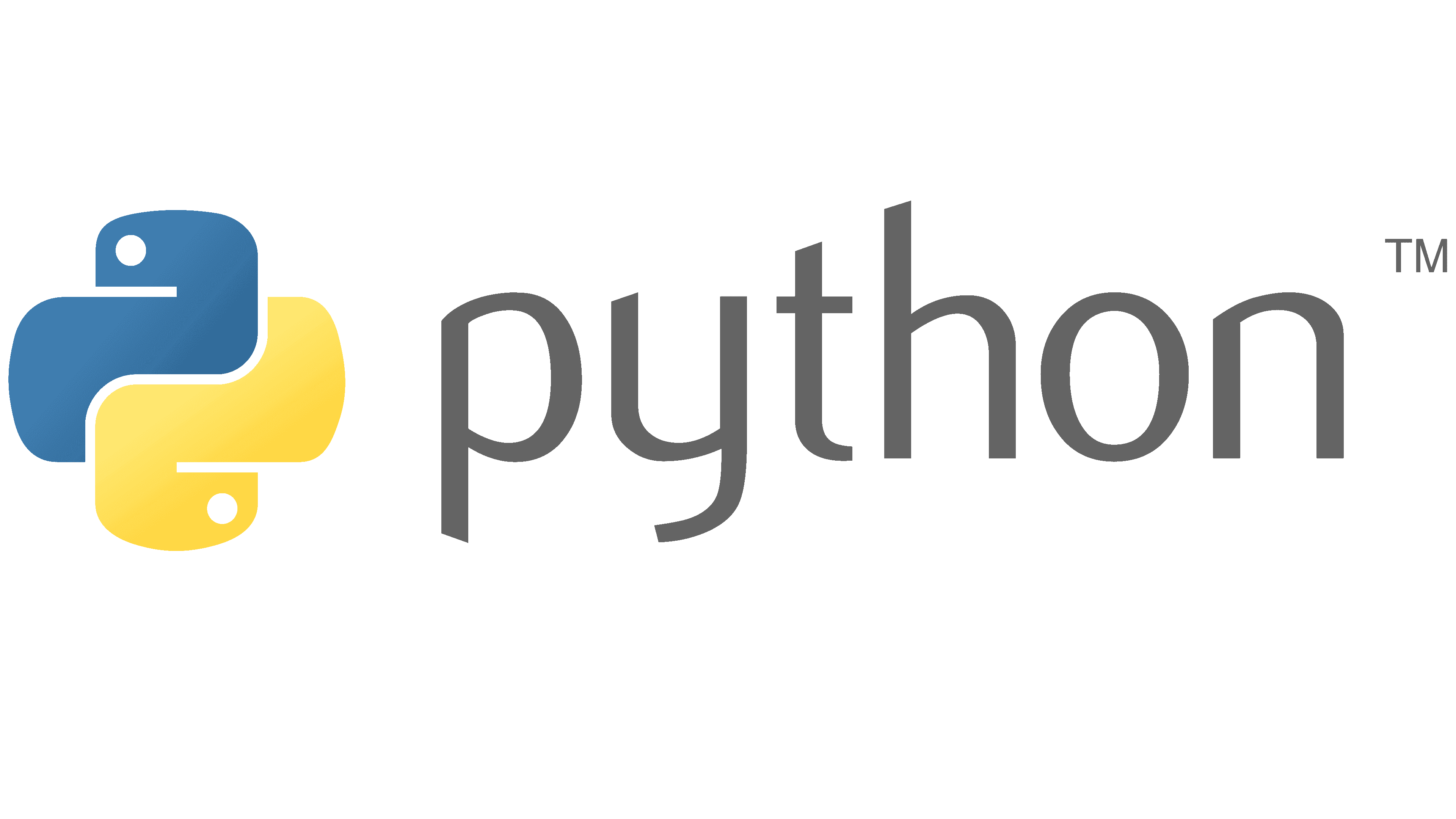
Introduction to Python
Python is an easy-to-understand and work-upon programming language widely used in data science. Its simplicity and readability make it an ideal choice for data manipulation, analysis, and visualization. Python offers libraries, such as NumPy, Pandas, and Matplotlib, which provide essential functionalities for data science tasks.
Application of Python in Data Science
- Data Analysis: Python’s extensive libraries, such as Pandas and NumPy, facilitate efficient data manipulation and analysis, making it a preferred language for exploratory data analysis.
- Machine Learning: Python’s scikit-learn library and TensorFlow for deep learning provide robust frameworks for implementing machine learning algorithms, from regression to complex neural networks.
- Data Visualization: With libraries like Matplotlib and Seaborn, Python enables the creation of visually compelling charts, graphs, and plots, aiding in the interpretation and communication of data insights.
- Statistical Analysis: Python supports statistical modeling and hypothesis testing through libraries like Statsmodels, empowering data scientists to validate findings and make informed decisions.
- Big Data Processing: Python integrates seamlessly with tools like Apache Spark for scalable big data processing, allowing data scientists to handle massive datasets efficiently.
- Natural Language Processing (NLP): Python’s NLTK and spaCy libraries facilitate text analysis and processing, enabling applications in sentiment analysis, language translation, and chatbot development.
- Data Cleaning and Preprocessing: Python’s versatility simplifies data cleaning tasks, ensuring data quality and preparing datasets for analysis or machine learning applications.
- Web Scraping: Python’s BeautifulSoup and Scrapy enable web scraping, extracting valuable data from websites, which is crucial for building datasets and conducting market research.
- Time Series Analysis: Python’s libraries like Statsmodels and Pandas support time series analysis, aiding in forecasting and trend identification in temporal data.
- Integration with Data Platforms: Python integrates with various data platforms, databases, and cloud services, facilitating smooth interactions between data science workflows and storage solutions.
Looking for an introduction to Python course: Learn Python for Data Science.
R Language

Introduction to R Language
R language is another popular programming language specifically designed for statistical analysis and data visualization. It offers a vast collection of packages and libraries that enable data scientists to perform advanced statistical modeling and exploratory data analysis.
Application of R Language in Data Science
- Statistical Analysis: R is widely used for statistical analysis, providing an extensive set of libraries and functions for descriptive and inferential statistics.
- Data Visualization: With packages like ggplot2, R excels in creating high-quality visualizations, aiding in the exploration and communication of data insights effectively.
- Machine Learning: R offers numerous machine learning libraries such as caret and randomForest, making it a versatile choice for building predictive models and conducting advanced analytics.
- Data Cleaning and Transformation: R provides robust tools like dplyr and tidyr, facilitating efficient data wrangling, cleaning, and transformation processes.
- Statistical Modeling: R supports various statistical models, enabling data scientists to conduct hypothesis testing, regression analysis, and other advanced statistical techniques.
- Integration with Big Data Technologies: R interfaces with big data technologies like Apache Spark, allowing seamless integration for analyzing large datasets.
- Community Support: R benefits from a vibrant and active community, offering various packages, resources, and forums for collaboration and problem-solving in data science projects.
You can also read: A Comprehensive Guide on ggplot2 in R.
SQL
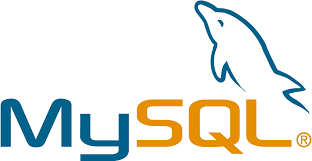
Introduction to SQL
Structured Query Language (SQL) is a standard language for managing and manipulating relational databases. Data scientists often use SQL to extract, transform, and analyze data stored in databases, making it an essential technology in data science.
Application of SQL in Data Science
- Data Retrieval: SQL is fundamental for extracting relevant data from relational databases, allowing data scientists to obtain specific subsets or aggregations essential for analysis.
- Data Cleaning and Transformation: SQL is employed to clean and preprocess data within databases, facilitating the transformation of raw data into a structured and usable format for analytical purposes.
- Data Integration: SQL supports the integration of diverse datasets, enabling data scientists to merge information from multiple sources for comprehensive analysis.
- Data Exploration: With SQL, data scientists can efficiently explore and understand the underlying patterns and characteristics of the data, using queries to identify trends or anomalies.
- Data Aggregation and Summarization: SQL’s GROUP BY and aggregate functions enable data summarization, creating meaningful insights and statistical summaries.
- Data Filtering: SQL’s WHERE clause allows data scientists to filter datasets based on specific conditions, facilitating focused analysis on subsets of the data.
- Database Management: SQL is crucial for managing and maintaining databases, ensuring efficient data storage, retrieval, and organization for streamlined data science workflows.
You can also read: SQL: A Full Fledged Guide from Basics to Advance Level.
Hadoop

Introduction to Hadoop
Hadoop is a distributed computing framework that allows for the processing of large datasets across clusters of computers. It provides a scalable and fault-tolerant environment for storing and analyzing big data, making it a crucial technology in data science.
Applications of Hadoop in Data Science
- Big Data Processing: Hadoop is integral to handling large-scale datasets, providing distributed storage and processing capabilities, and enabling efficient management of vast amounts of data in a scalable manner.
- Parallel Processing: Hadoop’s MapReduce paradigm facilitates parallel processing of data, enhancing the speed and efficiency of computations across distributed clusters, a crucial aspect of data-intensive tasks in data science.
- Cost-Effective Storage: Hadoop Distributed File System (HDFS) allows cost-effective storage of massive datasets by distributing and replicating data across nodes, ensuring fault tolerance and high availability.
- Scalability: Hadoop’s architecture allows easy scalability by adding nodes to the cluster, accommodating the growing demands of data science applications without significant infrastructure changes.
- Data Variety: Hadoop accommodates various data types, including structured and unstructured data, making it versatile for data science tasks that involve diverse data sources.
- Data Exploration and Analysis: Hadoop, coupled with tools like Apache Hive and Apache Pig, supports data exploration and analytics, empowering data scientists to derive valuable insights from large and complex datasets.
You can also read: An Introduction to Hadoop Ecosystem for Big Data.
Apache Spark
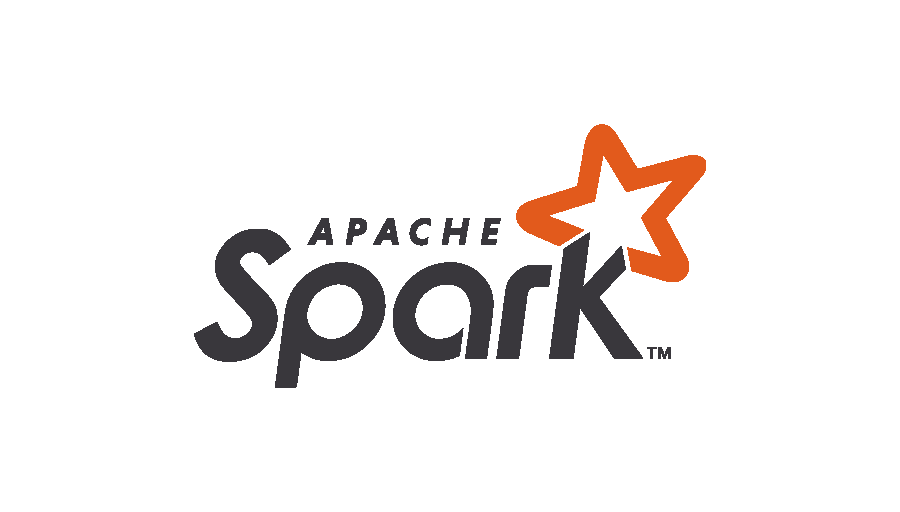
Introduction to Apache Spark
Apache Spark is an open-source distributed computing system with high-speed data processing capabilities. It provides a unified analytics engine for big data processing, machine learning, and graph processing, making it a valuable technology in data science.
Application of Apache Spark in Data Science
- Large-Scale Data Processing: Apache Spark excels in handling massive datasets, enabling efficient processing and analysis, a crucial aspect in various data science applications.
- Speed and Performance: Spark’s in-memory processing capabilities significantly enhance speed, outperforming traditional data processing frameworks. This acceleration is particularly beneficial for iterative algorithms common in machine learning.
- Versatility in Data Processing: Spark supports diverse data formats, making it versatile for data science tasks involving structured, semi-structured, or unstructured data.
- Machine Learning Libraries: Spark MLlib offers a comprehensive set of machine learning libraries, facilitating seamless integration of data processing and model development in a unified platform.
- Real-Time Data Streaming: Spark Streaming allows real-time data processing, crucial for applications like fraud detection, sentiment analysis, and IoT analytics in data science workflows.
- Ease of Use: Spark provides APIs in Java, Scala, Python, and R, making it accessible to a wide range of data scientists with different programming preferences.
- Community Support: Being an open-source framework, Apache Spark benefits from a vibrant community, ensuring continuous updates, improvements, and a wealth of shared knowledge for data scientists.
Also read: Introduction to Apache Spark and its Datasets.
TensorFlow
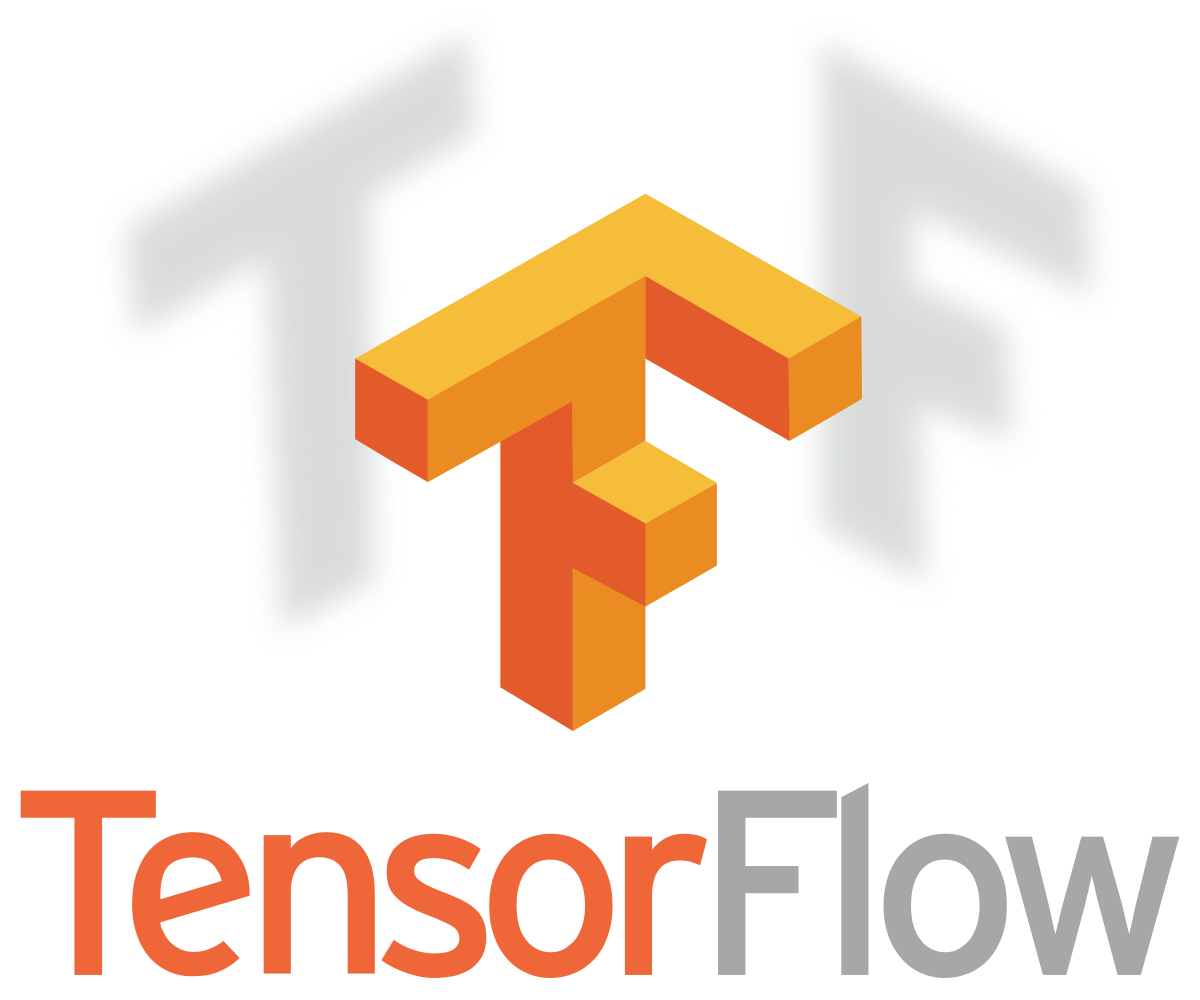
Introduction to TensorFlow
TensorFlow is a popular open-source library for machine learning and deep learning. It provides a flexible framework for building and deploying machine learning models, making it a go-to technology for data scientists working on complex predictive analytics tasks.
Application of TensorFlow in Data Science
- Data Processing: TensorFlow offers efficient data processing capabilities, allowing seamless integration with large datasets. It enables data scientists to preprocess and manipulate data, a crucial step in preparing information for model training.
- Model Deployment: TensorFlow facilitates the deployment of trained models to production environments, ensuring scalability and efficiency. This is essential for implementing machine learning solutions in real-world applications.
- Neural Network Visualization: The library provides tools for visualizing and understanding neural network architecture and behavior. This aids data scientists in optimizing model performance and interpreting results.
- Transfer Learning: TensorFlow supports transfer learning, enabling the reuse of pre-trained models for new tasks. This accelerates model development and improves performance, especially in scenarios with limited labeled data.
- Community and Ecosystem: TensorFlow boasts a vibrant community and a rich ecosystem of pre-built models, making it easier for data scientists to leverage existing resources and collaborate on solving complex problems in data science.
Also read: TensorFlow for Beginners With Examples and Python Implementation.
Tableau

Introduction to Tableau
Tableau is a powerful data visualization tool that enables data scientists to create interactive and visually appealing dashboards and reports. It simplifies the process of data exploration and communication of insights, making it an essential technology in data science.
Application of Tableau in Data Science
- Data Visualization: Tableau is extensively used in data science for its powerful data visualization capabilities. It transforms raw data into interactive and understandable visualizations, facilitating easier interpretation and analysis.
- Exploratory Data Analysis (EDA): Tableau aids in EDA by allowing data scientists to explore datasets quickly and identify patterns, trends, and outliers through dynamic visual representations.
- Dashboard Creation: Data scientists utilize Tableau to create interactive dashboards, providing a comprehensive overview of complex datasets. This enhances communication and decision-making processes within an organization.
- Integration with Data Sources: Tableau seamlessly integrates with various data sources, enabling data scientists to connect, analyze, and visualize data from diverse platforms and databases.
- Predictive Analytics: Tableau integrates with statistical models and machine learning algorithms, allowing data scientists to perform predictive analytics and showcase results visually.
- Real-time Analytics: With live data connections, Tableau supports real-time analytics, empowering data scientists to make informed decisions based on the most up-to-date information.
- Collaboration and Reporting: Tableau facilitates collaboration by allowing data scientists to share insights with team members through interactive reports, fostering a more data-driven and collaborative work environment.
Also read: A Step by Step Guide for Data Visualization using Tableau.
SAS

Introduction to SAS
SAS is a comprehensive software suite widely used for advanced analytics and business intelligence. It offers a wide range of tools and functionalities for data manipulation, statistical analysis, and predictive modeling, making it a valuable technology in data science.
Application of SAS in Data Science
- Data Management: SAS is widely used for efficient data management, handling, and manipulation, offering a comprehensive set of tools for data cleaning, transformation, and integration.
- Statistical Analysis: SAS provides a robust platform for statistical analysis, enabling data scientists to perform complex statistical modeling, hypothesis testing, and regression analysis to derive meaningful insights.
- Machine Learning: SAS incorporates advanced machine learning algorithms, facilitating the development and deployment of predictive models for tasks such as classification, clustering, and regression.
- Data Visualization: SAS offers powerful data visualization tools to create insightful graphs, charts, and dashboards, aiding in communicating complex findings to technical and non-technical stakeholders.
- Text Analytics: SAS enables text mining and natural language processing, allowing data scientists to extract valuable information from unstructured text data, such as customer reviews or social media comments.
- Optimization Techniques: SAS supports optimization techniques for solving complex business problems, helping in decision-making processes and resource allocation.
- Big Data Integration: SAS seamlessly integrates with big data platforms, allowing data scientists to efficiently analyze and derive insights from massive datasets.
Also read: SAS Learning path and resources – Business Analyst in SAS.
MATLAB

Introduction to MATLAB
MATLAB is a programming language and environment specifically designed for numerical computing and data analysis. It provides a vast collection of built-in functions and toolboxes for various data science tasks, making it a popular choice among data scientists.
Application of MATLAB in Data Science
- Data Visualization: MATLAB excels in creating visually compelling representations of complex datasets, aiding data scientists in interpreting patterns and trends through customizable plots and graphs.
- Statistical Analysis: MATLAB provides a robust environment for statistical modeling and hypothesis testing, facilitating in-depth exploration of data distributions and relationships.
- Machine Learning: With built-in libraries and toolboxes, MATLAB supports various machine learning algorithms for classification, regression, and clustering, streamlining model development and evaluation.
- Signal Processing: MATLAB’s signal processing capabilities are beneficial for analyzing time-series data, a crucial aspect of data science, enabling professionals to extract meaningful information from signals and sensor data.
- Image Processing: It offers a comprehensive set of functions for image analysis, aiding in tasks such as feature extraction, segmentation, and object recognition within computer vision.
- Big Data Integration: MATLAB’s parallel computing features facilitate the processing of large datasets, enhancing scalability and efficiency in handling big data challenges.
- Simulink Integration: Integration with Simulink allows data scientists to seamlessly incorporate simulations and model-based designs into their data science workflows, allowing them to take a holistic approach to problem-solving.
Also read: What is MATLAB? Working, Functions, and Applications.
Apache Kafka
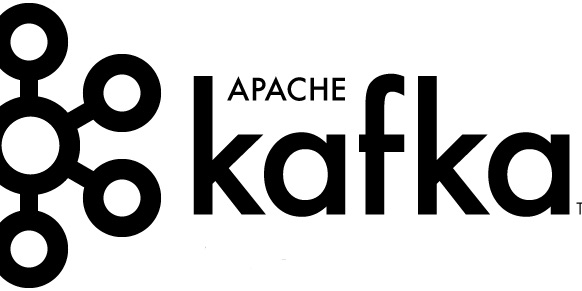
Introduction to Apache Kafka
Apache Kafka is a distributed streaming platform that enables the processing of real-time data streams. It provides high-throughput, fault-tolerant, and scalable data streaming capabilities, making it an essential technology for data scientists working with streaming data.
Application of Apache Kafka in Data Science
- Real-time Data Streaming: Apache Kafka facilitates seamless and real-time data streaming, making it an ideal solution for data science applications requiring continuous and immediate data updates.
- Data Integration and Aggregation: Kafka is a reliable backbone for integrating and aggregating data from various sources, allowing data scientists to work with consolidated and comprehensive datasets.
- Scalability and Fault Tolerance: Kafka’s distributed architecture ensures scalability and fault tolerance, providing a robust platform for handling large-scale data science workloads.
- Event-Driven Architecture: Kafka’s event-driven model aligns well with data science workflows, enabling timely responses to events and triggers crucial for dynamic data processing.
- Decoupling of Producers and Consumers: Kafka’s decoupled architecture allows independence between data producers and consumers, enhancing flexibility and adaptability in data science workflows.
- Data Transformation and Processing: Kafka supports stream processing, enabling data scientists to perform real-time transformations and analytics on streaming data.
- Data Pipeline Management: Kafka simplifies the management of complex data pipelines, facilitating the efficient movement of data between different stages of the data science workflow.
Also read: Introduction to Apache Kafka: Fundamentals and Working.
MongoDB
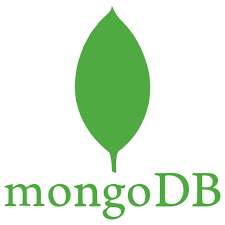
Introduction to MongoDB
MongoDB is a popular NoSQL database that offers high scalability and flexibility for storing and retrieving unstructured data. It is widely used in data science for handling large volumes of diverse data types, making it a valuable technology in this field.
Application of MongoDB in Data Science
- Flexible Data Model: MongoDB’s document-oriented, NoSQL database structure allows for flexibility in handling diverse data types. It is well-suited for accommodating data’s varied and unstructured nature in data science projects.
- Scalability: MongoDB’s horizontal scaling capabilities enable seamless data storage expansion, ensuring efficient handling of large datasets commonly encountered in data science applications.
- Real-time Analytics: With its ability to support real-time data processing, MongoDB is instrumental in facilitating instant analytics, crucial for time-sensitive data science tasks and decision-making.
- Aggregation Framework: MongoDB’s powerful aggregation framework simplifies data manipulation and transformation, enabling data scientists to perform complex analytics operations directly within the database.
- Geospatial Capabilities: For projects involving location-based data analysis, MongoDB’s native geospatial indexing and querying features provide a robust foundation for geospatial analytics in data science applications.
- Integration with Python and R: MongoDB seamlessly integrates with popular data science programming languages like Python and R, simplifying the development and deployment of data science applications.
- JSON/BSON Format: MongoDB stores data in JSON/BSON format, facilitating easy data exchange and integration with other tools commonly used in data science workflows.
Also read: A Complete Guide on Using MongoDB
Amazon Web Services (AWS)

Introduction of AWS
Amazon Web Services (AWS) is a cloud computing platform that provides a wide range of data storage, processing, and analysis services. It offers scalable and cost-effective solutions for data science projects, making it a preferred technology among data scientists.
Application of AWS in Data Science
- Scalability: AWS offers scalable infrastructure, allowing data scientists to seamlessly expand computational resources as needed for processing large datasets and running complex algorithms.
- Storage Solutions: With Amazon S3, AWS provides scalable and durable object storage, enabling efficient and secure storage of vast amounts of structured and unstructured data crucial for data science workflows.
- Managed Databases: AWS provides managed database services like Amazon RDS and Amazon Redshift, simplifying data storage and retrieval and facilitating the efficient organization of structured data for analysis.
- Machine Learning Services: AWS offers a range of machine learning services, such as Amazon SageMaker, allowing data scientists to build, train, and deploy machine learning models at scale without requiring extensive infrastructure management.
- Cost Efficiency: AWS’s pay-as-you-go pricing model allows data scientists to optimize costs by paying only for their computing resources and storage, making it a cost-effective solution for data science projects.
- Integration with Analytics Tools: AWS seamlessly integrates with popular data science and analytics tools, providing a cohesive environment for data scientists to work with their preferred applications and frameworks.
- Security and Compliance: AWS prioritizes data security, providing a robust infrastructure with encryption, access controls, and compliance certifications, ensuring the confidentiality and integrity of sensitive data in data science projects.
Also read: What is AWS? Why Every Data Science Professional Should Learn Amazon Web Services.
Microsoft Azure
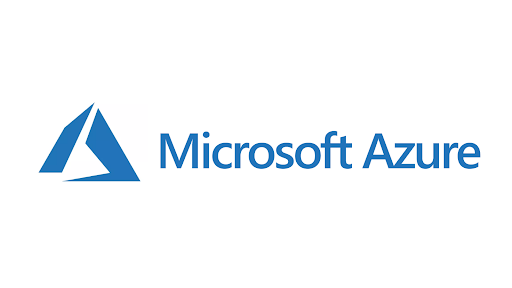
Introduction of Microsoft Azure
Microsoft Azure is another cloud computing platform that offers a comprehensive set of services for data science. It provides tools and frameworks for data storage, machine learning, and analytics, making it a valuable technology in this field.
Application of Microsoft Azure in Data Science
- Data Storage and Management: Microsoft Azure provides scalable and secure cloud storage solutions, allowing data scientists to store and manage large datasets efficiently.
- Data Processing and Analysis: Azure offers powerful data processing capabilities with services like Azure Databricks and HDInsight, facilitating seamless data analysis and exploration.
- Machine Learning Services: Azure Machine Learning empowers data scientists to build, train, and deploy machine learning models at scale, streamlining the end-to-end machine learning lifecycle.
- Integration with Open Source Tools: Azure supports popular open-source data science tools and frameworks, fostering flexibility and interoperability for data scientists accustomed to tools like Python and R.
- Collaboration and Workflow Automation: Azure Notebooks and Azure Machine Learning Studio enhance collaboration among data science teams, while Azure Pipelines automate workflows for model deployment and monitoring.
- Scalability and Performance: Leveraging Azure’s cloud infrastructure, data scientists can scale their computations horizontally and vertically, ensuring optimal performance for resource-intensive tasks.
- Data Visualization: Azure services like Power BI enable data scientists to create interactive and insightful visualizations, aiding in effectively communicating findings to stakeholders.
Also explore: Fundamentals of Microsoft Azure Course
Google Cloud Platform (GCP)
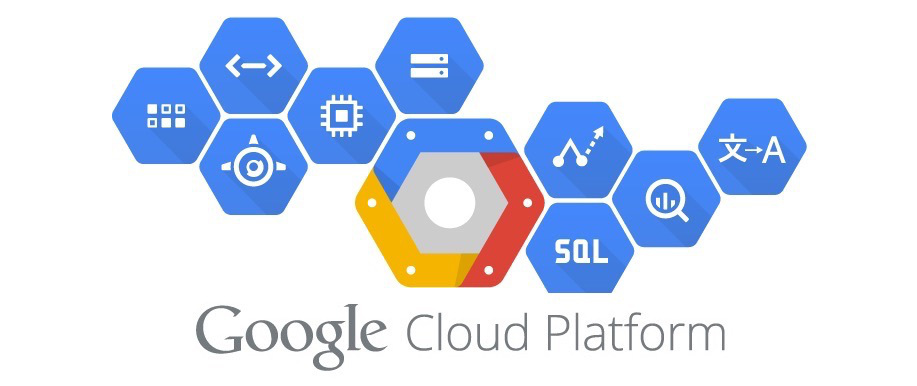
Introduction of GCP
Google Cloud Platform (GCP) is a suite of cloud computing services provided by Google. It offers a wide range of tools and technologies for data storage, processing, and analysis, making it a popular choice among data scientists.
Application of GCP in Data Science
- BigQuery for Data Warehousing: Google Cloud Platform (GCP) offers BigQuery, a fully managed and serverless data warehouse that facilitates quick and scalable analysis of large datasets.
- Data Storage with Cloud Storage: GCP’s Cloud Storage provides a secure and scalable solution for storing vast amounts of data, ensuring accessibility and durability for data science applications.
- Machine Learning on AI Platform: GCP’s AI Platform enables data scientists to build, deploy, and scale machine learning models efficiently, with features like AutoML for streamlined model development.
- Dataflow for Stream and Batch Processing: GCP Dataflow allows data scientists to process and analyze both real-time streaming and batch data, providing flexibility in handling diverse data sources.
- TensorFlow and Colab Integration: GCP supports TensorFlow, a popular open-source machine learning framework, and integrates seamlessly with Colab, a collaborative platform for data science projects.
- Vertex AI for End-to-End ML: GCP’s Vertex AI offers a unified platform for end-to-end machine learning development, from data preparation to model deployment, simplifying the data science workflow.
Also read: GCP: The Future of Cloud Computing
Apache Cassandra

Introduction of Apache Cassandra
Apache Cassandra is a highly scalable and distributed NoSQL database designed for handling large amounts of data across multiple servers. It provides high availability and fault tolerance, making it a valuable technology for data scientists working with big data.
Application of Apache Cassandra in Data Science
- Scalability: Apache Cassandra excels in handling massive amounts of data across distributed clusters, making it suitable for data science applications requiring scalability.
- High Availability: Its decentralized architecture ensures high availability and fault tolerance, crucial for maintaining continuous access to data in data science workflows.
- Flexible Data Model: Cassandra’s NoSQL column-family data model allows for flexible schema design, accommodating varied and evolving data structures often encountered in data science projects.
- Real-time Analytics: Its ability to handle read and write operations at high speeds makes Cassandra well-suited for real-time analytics, facilitating rapid decision-making in data science processes.
- Time-Series Data: Cassandra is adept at handling time-series data, making it valuable for data science applications involving temporal analysis and trend forecasting.
- Distributed Computing: Cassandra’s distributed nature enables parallel processing, a crucial feature for data-intensive computations in large-scale data science tasks.
- Support for Geospatial Data: Its support for geospatial data types is beneficial for spatial analytics, catering to data science applications that involve location-based insights.
Also read: Apache Cassandra: High-Performance Distributed NO-SQL Database
Python Libraries (NumPy, Pandas, Matplotlib, etc.)
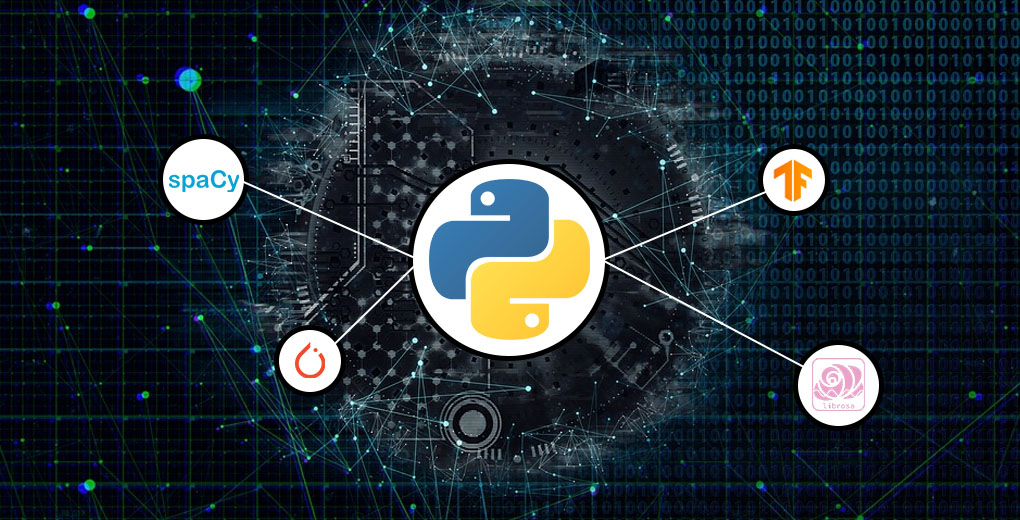
Introduction to Python Libraries
Python libraries like NumPy, Pandas, and Matplotlib offer essential data manipulation, analysis, and visualization functionalities. These libraries simplify the implementation of complex data science tasks, making them indispensable technologies in this field.
Application of Python Libraries in Data Science
- NumPy: A fundamental library for numerical operations, NumPy enables efficient handling of large arrays and matrices, providing essential functions for mathematical operations and linear algebra in data science.
- Pandas: Widely used for data manipulation and analysis, Pandas offers data structures like DataFrames, allowing easy indexing, filtering, and cleaning of datasets. It simplifies tasks such as data aggregation and handling missing values.
- Matplotlib: Essential for data visualization, Matplotlib facilitates the creation of various plots and charts, aiding in the exploration and communication of data trends and patterns. Its versatility makes it a cornerstone in creating informative visualizations.
- Seaborn: Built on top of Matplotlib, Seaborn specializes in statistical data visualization. It simplifies the creation of complex visualizations, enhancing plots’ aesthetic appeal and interpretability.
- Scikit-learn: A powerful machine learning library, Scikit-learn provides tools for data modeling, classification, regression, clustering, and more. Its simplicity and extensive documentation make it an invaluable resource in building predictive models.
- Statsmodels: Focused on statistical models, Statsmodels complements Scikit-learn by offering tools for hypothesis testing, regression analysis, and time-series analysis, contributing to a comprehensive statistical approach in data science.
Also read: Top 10 Python Libraries that You Must Know!
Machine Learning Algorithms
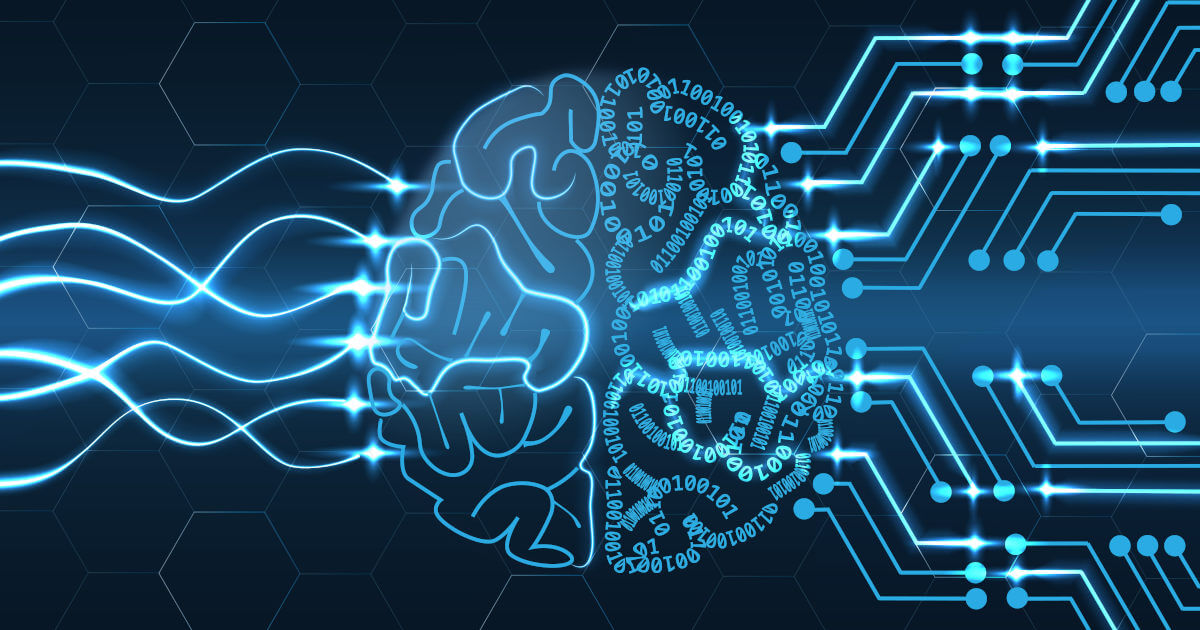
Introduction to Machine Learning Algorithms
Machine learning algorithms form the backbone of data science. They enable data scientists to build predictive models and make data-driven decisions. Various algorithms, such as linear regression, decision trees, and neural networks, are widely used in data science.
Application of Machine Learning Algorithms in Data Science
- Predictive Analytics: Machine learning algorithms are applied to analyze historical data, identifying patterns and trends to predict future outcomes accurately.
- Classification and Categorization: ML algorithms categorize data into classes or groups based on patterns, enabling effective segmentation for targeted decision-making.
- Clustering Analysis: Unsupervised learning algorithms help uncover hidden patterns within data, facilitating the identification of natural groupings or clusters.
- Recommendation Systems: ML powers recommendation engines, providing personalized suggestions by analyzing user preferences and behavior.
- Anomaly Detection: ML identifies outliers or anomalies in datasets, aiding in detecting irregularities or potential issues.
- Image and Speech Recognition: ML algorithms excel in image and speech processing, powering applications like facial recognition, object detection, and voice command systems.
- Optimization Algorithms: ML contributes to optimizing processes, resources, and decision-making through algorithms that iteratively improve outcomes based on feedback.
- Regression Analysis: ML models predict continuous numerical values, providing insights into relationships between variables for informed decision-making.
- Automated Decision-Making: ML algorithms streamline decision processes by learning from data, enhancing efficiency and reducing the need for manual intervention in various data science applications.
Also read: Top 25 Machine Learning Projects for Beginners in 2024
Data Visualization Tools
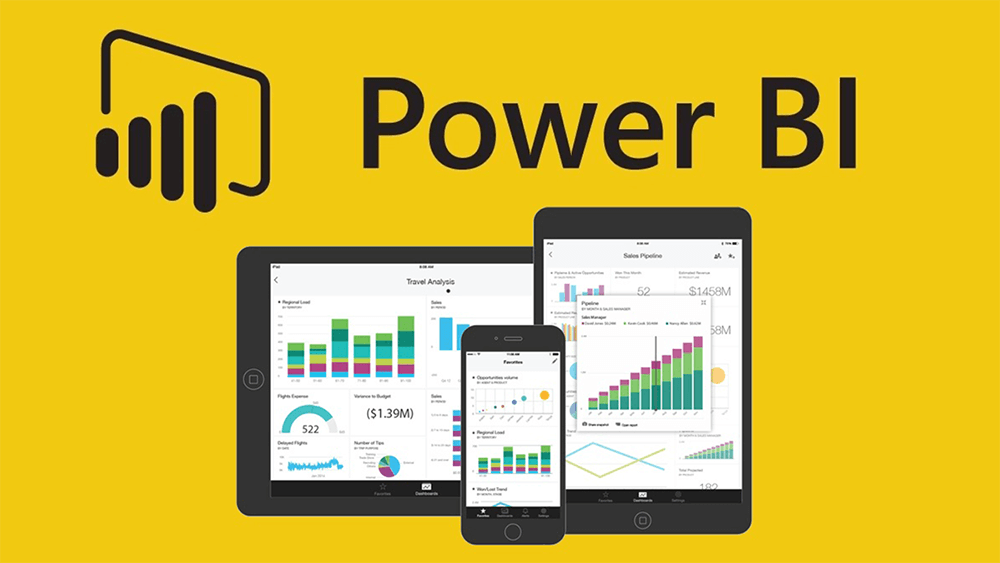
Introduction to Data Visualization Tools
Data visualization tools such as Tableau, Power BI, and D3.js enable data scientists to create visually appealing and interactive visualizations. These tools facilitate the communication of insights and enhance the understanding of complex data, making them crucial technologies in data science.
Application of Data Visualization Tools in Data Science
- Enhanced Communication: Data visualization tools facilitate visual, intuitive communication of complex findings, enabling clearer understanding among diverse stakeholders.
- Pattern Recognition: These tools assist data scientists in identifying patterns, trends, and outliers within datasets, fostering quicker and more efficient decision-making.
- Exploratory Data Analysis (EDA): Data visualization aids in EDA by providing interactive charts and graphs, allowing data scientists to explore and understand data structure before in-depth analysis.
- Storytelling with Data: Visualization tools enable data scientists to create compelling narratives by presenting information in a visually engaging format, enhancing the storytelling aspect of data-driven insights.
- Real-time Monitoring: Dashboards and interactive visualizations help monitor key performance indicators (KPIs), providing timely insights for immediate action.
- Decision Support: These tools present information visually, assisting decision-makers in grasping complex data scenarios quickly and facilitating informed and strategic decision-making.
- Collaboration and Reporting: Visualization tools support collaborative work by providing a platform for teams to interpret and discuss data findings. They also streamline the reporting process, making it more efficient and accessible.
- Predictive Model Evaluation: Visualizations help assess predictive models’ performance, helping data scientists identify areas for improvement and refine their models for greater accuracy.
Also read: Top 20 Data Visualization Examples
Deep Learning

Introduction to Deep Learning
Deep learning is a subset of machine learning that focuses on training artificial neural networks to perform complex tasks. It has revolutionized fields such as computer vision and natural language processing, making it an essential technology in data science.
Application of Deep Learning in Data Science
- Image and Speech Recognition: Deep learning excels in image and speech recognition tasks, enabling accurate identification and classification of patterns and features within visual and auditory data.
- Natural Language Processing (NLP): Deep learning models are pivotal in NLP applications, enhancing language understanding, sentiment analysis, and machine translation, thereby improving the processing of vast amounts of textual data.
- Predictive Analytics: Deep learning algorithms contribute to advanced predictive modeling, offering more accurate and nuanced predictions in various domains, such as finance, healthcare, and marketing.
- Anomaly Detection: Deep learning effectively detects anomalies within datasets, aiding in identifying irregular patterns or outliers that may signify potential issues or opportunities.
- Recommendation Systems: Deep learning powers sophisticated recommendation engines, providing personalized suggestions based on user behavior and preferences, thereby enhancing user experience in platforms like e-commerce and streaming services.
- Automated Feature Learning: Deep learning automates the extraction of relevant features from data, eliminating the need for manual feature engineering and enabling models to learn hierarchical representations.
- Time Series Analysis: Deep learning models excel in analyzing and predicting time-series data, offering improved accuracy in forecasting trends and patterns over time.
- Drug Discovery: Deep learning accelerates drug discovery processes by analyzing molecular structures and predicting potential drug candidates, reducing the time and resources required for research and development.
Also read: A Guide on Deep Learning: From Basics to Advanced Concepts
Natural Language Processing (NLP)
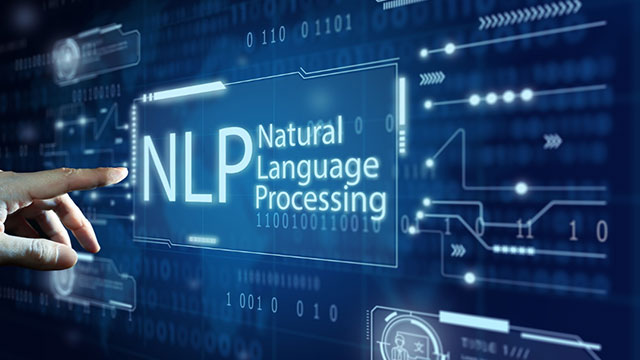
Introduction to Natural Language Processing (NLP)
Natural Language Processing (NLP) is a branch of artificial intelligence focusing on the interaction between computers and human language. It enables data scientists to analyze and understand textual data, making it a valuable technology in data science.
Application of NLP in Data Science
- Text Analysis: NLP in data science involves text mining and analysis, allowing the extraction of valuable insights from unstructured textual data.
- Sentiment Analysis: NLP algorithms can determine sentiments expressed in text, aiding businesses in gauging customer opinions, feedback, and overall sentiment towards products or services.
- Information Extraction: NLP helps identify and extract key information from large datasets, streamlining the data extraction process and making it more efficient.
- Language Translation: NLP facilitates language translation, breaking down language barriers and enabling businesses to analyze data from diverse linguistic sources.
- Chatbots and Virtual Assistants: NLP powers chatbots and virtual assistants, enhancing user interactions by understanding and responding to natural language queries.
- Named Entity Recognition (NER): NLP algorithms identify and classify named entities (e.g., names, locations, organizations) in text, aiding in information categorization.
- Speech Recognition: NLP enables the conversion of spoken language into text, contributing to voice-controlled systems and transcription services.
- Topic Modeling: NLP techniques help uncover hidden topics within large volumes of text, facilitating thematic analysis for improved decision-making.
- Summarization: NLP algorithms can generate concise summaries from lengthy texts, aiding in quicker comprehension and information retrieval.
- Personalization: NLP is utilized for personalized content recommendations by understanding user preferences and behavior through the analysis of textual interactions.
Also read: NLP Tutorials Part -I from Basics to Advance
Conclusion
In conclusion, data science heavily relies on advanced technologies to handle complex data analysis tasks. The top 20+ technologies discussed in this article, including Python, R, SQL, Hadoop, Spark, TensorFlow, Tableau, SAS, MATLAB, Apache Kafka, MongoDB, AWS, Microsoft Azure, GCP, Apache Cassandra, Python Libraries, Machine Learning Algorithms, Deep Learning, NLP, and Data Visualization Tools, play a vital role in enabling data scientists to extract valuable insights from data. By leveraging these technologies, data scientists can enhance their data science projects’ efficiency, accuracy, and scalability, ultimately driving innovation and decision-making in various industries.
If you want to shape your future in data science, explore the Certified AI & ML BlackBelt Plus Program. This comprehensive program is meticulously designed to empower you with the expertise needed to navigate the intricate realms of Artificial Intelligence and Machine Learning. Whether you’re a seasoned professional seeking to enhance your skills or a beginner eager to delve into the exciting world of AI and ML, our program caters to all levels of expertise. Join us and become a certified BlackBelt, mastering the cutting-edge technologies shaping the future. Elevate your career and be at the forefront of the AI and ML revolution – enroll now and unlock a world of possibilities!




